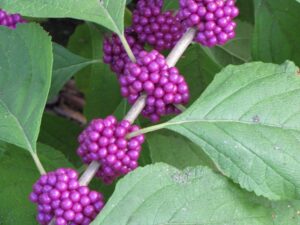How to Create Wildlife-Friendly Landscapes
go.ncsu.edu/readext?811950
en Español / em Português
El inglés es el idioma de control de esta página. En la medida en que haya algún conflicto entre la traducción al inglés y la traducción, el inglés prevalece.
Al hacer clic en el enlace de traducción se activa un servicio de traducción gratuito para convertir la página al español. Al igual que con cualquier traducción por Internet, la conversión no es sensible al contexto y puede que no traduzca el texto en su significado original. NC State Extension no garantiza la exactitud del texto traducido. Por favor, tenga en cuenta que algunas aplicaciones y/o servicios pueden no funcionar como se espera cuando se traducen.
Português
Inglês é o idioma de controle desta página. Na medida que haja algum conflito entre o texto original em Inglês e a tradução, o Inglês prevalece.
Ao clicar no link de tradução, um serviço gratuito de tradução será ativado para converter a página para o Português. Como em qualquer tradução pela internet, a conversão não é sensivel ao contexto e pode não ocorrer a tradução para o significado orginal. O serviço de Extensão da Carolina do Norte (NC State Extension) não garante a exatidão do texto traduzido. Por favor, observe que algumas funções ou serviços podem não funcionar como esperado após a tradução.
English
English is the controlling language of this page. To the extent there is any conflict between the English text and the translation, English controls.
Clicking on the translation link activates a free translation service to convert the page to Spanish. As with any Internet translation, the conversion is not context-sensitive and may not translate the text to its original meaning. NC State Extension does not guarantee the accuracy of the translated text. Please note that some applications and/or services may not function as expected when translated.
Collapse ▲
Culver’s root (Veronicastrum virginicum), coneflowers (Echinacea purpurea), and bee balm (Monarda didyma) Image by Debbie Roos
With a little planning and careful plant selection, you can create an attractive native plant landscape that works in harmony with the environment to provide a haven for native wildlife. Including native plants in your landscape can help offset habitat losses from development and the spread of invasive plants. You don’t have to replant your entire yard all at once. Begin by replacing a non-native invasive plant with a native one or replacing a section of turf with a bed of native plants.
Getting Started
Follow the steps below to design an attractive, native plant landscape that is beneficial to both you and wildlife. Why landscape for wildlife?
Step One — Map Existing Site and Vegetation — Create a base plan and identify the plants you already have. Are they native? Do they provide food or shelter for wildlife? Should you keep them or replace them?

American Beautyberry (Callicarpa Americana) berries provide food for many songbirds, including the American Robin, Brown Thrasher, Purple Finch, and Eastern Towhee. The berries are also consumed by armadillos, foxes, opossums, raccoons, and squirrels. White-tailed deer are known to browse on the leaves in the summer and enjoy the fruits after leaf drops in the fall, Forest-and-Kim-Starr–CC-BY
Step Two — Identify Environmental Factors — Create a site analysis identifying what you have to offer plants. Map sun, wind, sight, sound, and drainage patterns.
Steps Three and Four — Identify Human and Wildlife Activities and Uses. All wildlife needs food, water, and cover, and specific types of wildlife have additional needs, including a variety of plant species, careful arrangement of plant types, and the addition of feeders, nest boxes, and water features.
Step Five — Design a Native Plant Landscape – Create a design with canopy, shrub, and ground-level habitat in mind. Develop a plant list.
Step Six — Installing and Maintaining a Wildlife-Friendly Landscape: This section covers where to get native plants, how to prepare the site, and how to install the plants, as well as essential maintenance strategies for sustainability.
This content was originally prepared by Dr. Christopher Moorman and Patricia Lindsay. The initial project was funded by the NC Forest Service Urban and Community Forestry Program, Renewable Resources Extension Act, and North Carolina State University.
Additional Information
N.C. Cooperative Extension Publications
- Managing Backyards and Other Urban Habitats for Birds,
- Butterflies in Your Backyard,
- Landscaping for Wildlife with Native Plants, and
- Reptiles and Amphibians in Your Backyard.
The Extension Gardener Handbook
Certification Programs


